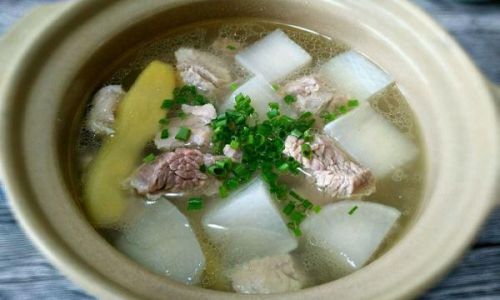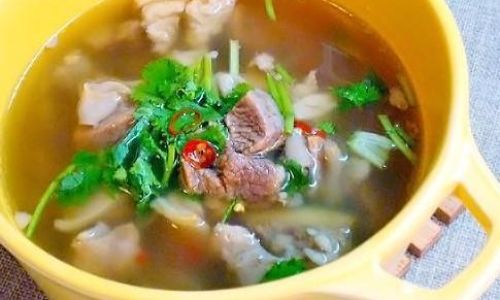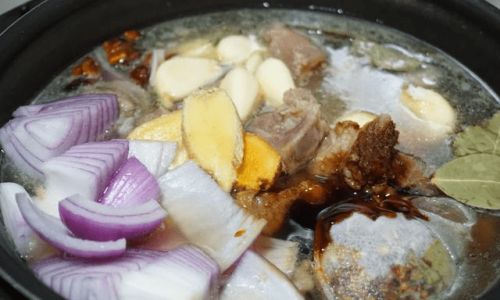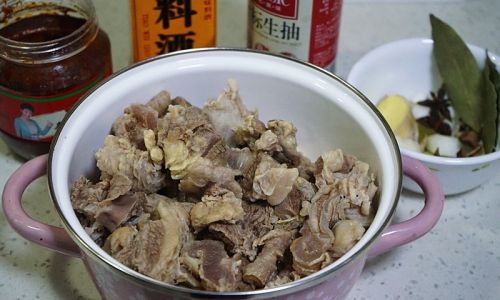Introduction: The Essence of Simmering Beef Stew
In the realm of culinary delights, few dishes evoke the warmth and comfort of home quite like a well-cooked beef stew. This timeless classic transcends cultural boundaries, finding its place in kitchens worldwide as a symbol of hearty nourishment and familial gatherings. At its core, beef stew is a simple yet deeply flavorful dish that thrives on patience and technique. The art of simmering beef stew lies not just in the ingredients but also in the meticulous process that transforms tough cuts of meat into tender, succulent morsels. This guide aims to demystify the process, providing a step-by-step journey through the essentials of creating a perfect beef stew.

Understanding the Ingredients: Quality Matters
Before diving into the cooking process, it’s crucial to understand the role each ingredient plays in achieving the desired outcome.
Beef Choice:
The foundation of any beef stew is, of course, the beef itself. Ideally, you should opt for cuts that benefit from slow cooking, such as chuck roast, brisket, or short ribs. These cuts are typically marbled with fat, which melts during the long cooking process, rendering the meat tender and flavorful. Avoid lean cuts like sirloin or fillet, as they can become dry and unpalatable when cooked for extended periods.
Aromatics:
Aromatics form the backbone of the stew’s flavor profile. Essentials include onions, carrots, celery, and garlic. These ingredients should be finely chopped to ensure they release their juices and flavors into the broth effectively.
Liquid:
The liquid used for simmering is equally important. Beef broth or stock provides a rich, savory base, while red wine can add complexity and depth. Water, while cheaper, lacks the necessary flavor, so it’s best to avoid it unless absolutely necessary.
Seasonings and Herbs:
Seasonings like salt, pepper, and paprika add essential layers of taste. Herbs such as thyme, rosemary, and bay leaves infuse the stew with subtle, earthy notes. Remember, herbs should be added early in the cooking process to allow their flavors to meld fully with the other ingredients.
Thickening Agents:
Traditionally, beef stew thickens naturally as the meat breaks down and starches from the vegetables are released. However, you can also use flour, cornstarch, or even a beef bouillon cube to achieve a thicker consistency if desired.
Preparing the Ingredients: The Fine Art of Preparation
Proper preparation is key to unlocking the full potential of your ingredients.
Trimming and Cubing the Beef:
Begin by trimming any excess fat from the beef. This not only helps reduce the final dish’s greasiness but also ensures a more balanced flavor. Cut the meat into uniform cubes, approximately 1.5 to 2 inches in size. Uniformity is crucial because it ensures even cooking.
Preparing the Vegetables:
Peel and chop the onions, carrots, and celery into bite-sized pieces. Mince the garlic finely. The size of the vegetable pieces should complement the beef cubes, neither overpowering nor getting lost in the mix.
Searing the Beef:
Searing the beef before simmering is a crucial step often overlooked. It not only adds a beautiful caramelized crust to the meat but also locks in juices, enhancing flavor and texture. Heat a little oil in a heavy-bottomed pot or Dutch oven over medium-high heat. Add the beef cubes in batches, ensuring they don’t crowd the pan. Sear until browned on all sides, then remove and set aside.
The Cooking Process: Patience and Precision
Now, let’s dive into the heart of the matter – the simmering process.

Building the Base:
In the same pot used for searing, sauté the chopped onions, carrots, celery, and garlic until they soften and begin to brown. This process, known as “sweating,” extracts the natural sugars and flavors from the vegetables, creating a rich, aromatic base for the stew.
Deglazing:
Once the vegetables are well-cooked, deglaze the pot with a splash of red wine (if using) or beef broth. Use a wooden spoon to scrape up any browned bits stuck to the bottom of the pot – these are flavorful fond, packed with caramelized sugars and meat juices.
Adding the Beef and Liquid:
Return the seared beef cubes to the pot, nestling them into the vegetable mixture. Pour in enough beef broth or stock to fully submerge the meat and vegetables. Add the herbs and any additional seasonings. Bring the mixture to a gentle boil, then reduce the heat to low.
Simmering:
The magic happens during the simmering phase. Cover the pot and let the stew cook slowly over low heat for several hours, preferably 3 to 4 hours, or until the meat is fork-tender. The slow cooking process allows the flavors to meld, the meat to break down, and the vegetables to soften without becoming mushy.
Checking and Adjusting:
Periodically check the stew, stirring gently to prevent sticking and ensure even cooking. If the stew appears too thick, add a little more broth. Conversely, if it’s too thin, you can remove the lid for the final 30 minutes to allow some evaporation. Taste and adjust the seasoning as needed, adding salt and pepper to taste.
Final Touches:
Once the beef is tender and the flavors have fully developed, it’s time to finish the stew. If you prefer a thicker consistency, you can create a slurry by mixing a small amount of cornstarch or flour with water and stirring it into the stew. Let it simmer for an additional 5-10 minutes until the desired thickness is achieved.
Serving:
Serve the beef stew hot, garnished with freshly chopped parsley or thyme leaves for a burst of fresh flavor. It pairs wonderfully with crusty bread, mashed potatoes, or a simple green salad.
Storage and Reheating: Keeping the Flavor Intact
Leftover beef stew is a treasure trove of flavors that can be enjoyed for days. Store it in an airtight container in the refrigerator for up to 4 days or in the freezer for up to 3 months.
When reheating, do so gently over low heat, stirring occasionally to prevent sticking and ensure even warming. Adding a splash of broth or water can help restore moisture lost during storage.
Conclusion: A Labor of Love
Simmering beef stew is a labor of love that rewards patience and attention to detail. It’s a dish that transcends mere nourishment, becoming a symbol of care, tradition, and the simple joys of shared meals. By following this guide, you’ll be well-equipped to create a beef stew that’s not just satisfying but also memorable, a dish that brings warmth to the heart and soul. So, gather your ingredients, fire up the stove, and embark on a culinary journey that promises to deliver both comfort and delight. Happy cooking!






0 comments